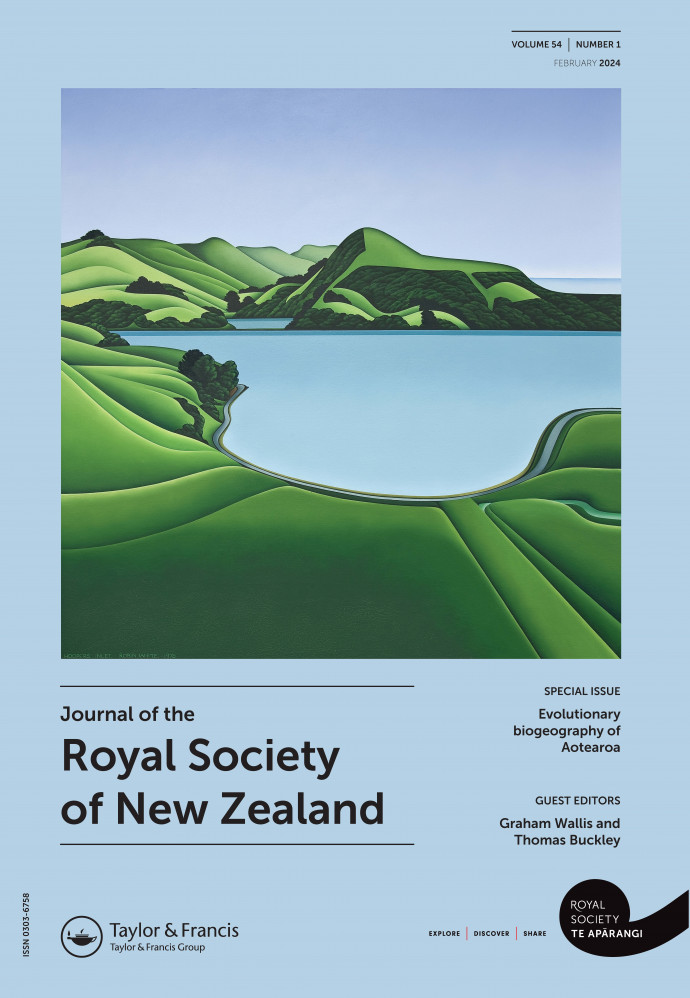News
Published 25 October 2023JRSNZ special issue: Evolutionary biogeography of Aotearoa

New Zealand has a special place in world biogeography, posing many intriguing questions that are being addressed by an active research community. Recent advances have been fueled by extensive fossil and subfossil discoveries as well as application of new technologies as disparate as ancient DNA analysis and Geographical Information Systems (GIS).
This special issue of the Journal of the Royal Society of New Zealand has brought together findings across a range of questions concerning the evolutionary biogeography of Aotearoa.
This special issue includes an editorial from guest editors Graham Wallis and Thomas Buckley. In the editorial, the guest editors say the breadth of biogeography and the increasing application of specialist tools to its questions makes it a challenging area to review and synthesise. This current volume attempts to bring together a diverse set of topics and authors that reflect the current state of the biogeography of Aotearoa as a whole.
The special issue includes five review articles:
- Phylogeography reveals the complex impact of the Last Glacial Maximum on New Zealand’s terrestrial biota, which reviews the major phylogeographic patterns in Aotearoa New Zealand’s terrestrial flora and fauna that have been associated with the Ōtira Glaciation of the Pleistocene;
- Key questions on the evolution and biogeography of New Zealand alpine insects, which discusses the geological history and physical characteristics of New Zealand alpine environments and the resulting selective pressures placed on insect species;
- Insights into Aotearoa New Zealand’s biogeographic history provided by the study of natural hybrid zones, which reviews research on hybrid zones and zones of past introgression, both terrestrial and marine, in Aotearoa New Zealand;
- Thirty years of ancient DNA and the faunal biogeography of Aotearoa New Zealand: lessons and future directions, which summarises the last 30 years of ancient DNA research into New Zealand faunal biogeography and highlights key objectives, challenges, and possibilities for the next 30 years and beyond; and finally
- Eco-evolutionary priority and the assembly of the New Zealand flora, which critically asses the claim that eco-evolutionary priority effects, in which early arriving taxa pre-empt environmental niches and evolve to exclude or marginalise later arriving taxa, have influenced current vegetation communities in New Zealand.
This special issue also includes two research articles:
- Diversification and trait evolution in New Zealand woody lineages across changing biomes examines the links between biomes occupied, traits, and diversification of woody plant lineages in New Zealand.
- Exceptional endemicity of Aotearoa New Zealand biota shows how taxa dispersal traits, but not phylogeny, correlate with global species richness, proposes that the high richness and endemicity of mobile macrofauna in Aotearoa is caused by a combination of niche specialisation opportunities and predation limiting dispersal respectively.
